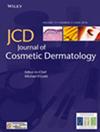How Should We Use Hyaluronidase for Dissolving Hyaluronic Acid Fillers?
Abstract
Background
Hyaluronic acid (HA) fillers are commonly used in esthetic medicine for facial contouring and rejuvenation. However, complications such as overcorrection, vascular occlusion, and irregular filler distribution necessitate the use of hyaluronidase to dissolve the fillers. This study aimed to evaluate the efficacy of hyaluronidase in degrading different types of HA fillers and provide clinical guidelines for its use based on filler type, dosage, and application techniques.
Methods
A series of in vitro and in vivo experiments were conducted to assess the dissolution of biphasic and monophasic HA fillers using varying concentrations of hyaluronidase. The in vivo component used animal models to determine the duration of hyaluronidase activity in biological tissues, whereas the in vitro study examined the dissolution rates of HA fillers in response to different hyaluronidase concentrations and application methods. A control study using saline was also performed to compare the natural hydration process of the fillers.
Results
Hyaluronidase efficacy was found to vary based on the type of HA filler and the enzyme's concentration. Biphasic fillers dissolved more rapidly at lower concentrations of hyaluronidase compared to monophasic fillers, which required higher concentrations and longer exposure times for effective breakdown. The study also demonstrated that direct injection of hyaluronidase into the filler mass was more effective than surface application. Pharmacokinetic analysis revealed that hyaluronidase activity diminished within 30 min in biological tissues, highlighting the need for timely intervention in clinical scenarios.
Conclusion
Hyaluronidase is effective in dissolving HA fillers, with its efficacy dependent on the type of filler, concentration, and application technique. Biphasic fillers respond more quickly to hyaluronidase, whereas monophasic fillers require higher doses and multiple treatments. Clinical recommendations include using direct injection techniques, tailoring hyaluronidase dosage based on the filler type, and considering hypersensitivity reactions. Future research should focus on the long-term effects of hyaluronidase and refining clinical protocols for its use.


 求助内容:
求助内容: 应助结果提醒方式:
应助结果提醒方式:


